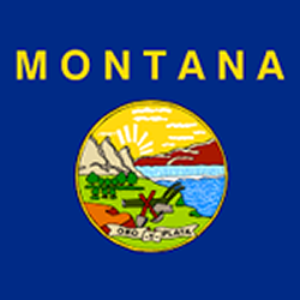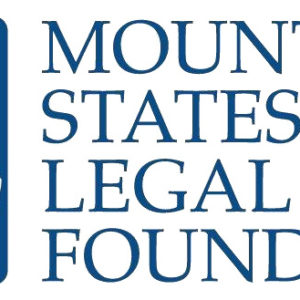The economic impact of government imposed regulations due to the COVID-19 virus was much the same in every corner of the state of Montana. There was far greater differences in economic activity between different areas of the state before COVID, than what appeared after.
All of the 2020 declines across the state were historically large, reported Patrick Barkey, Director of the Bureau of Business and Economic Research (BBER) at UM, during the Montana Economic Outlook virtual seminar.
“The small differences between cities largely stem from the relative size of the accommodations and food services in their local economies, which bore the brunt of COVID-related business declines,” according to Barkey in the Montana Business Quarterly.
Another factor that played a role in the differences was the degree to which government jobs sustain a community’s economy. Few if any government jobs, at any level of government, were suspended during the shutdowns on business and associated jobs in the private sector. So, for example, for that reason, Helena in Lewis & Clark County would fare better.
But Lewis & Clark County was not recession proof during the COVID downturn, according to Barkey. “The shutdown in schools helped produce the opposite – a disproportionate contraction in government employment and wages that produced more pain than elsewhere. This was partially offset by strength in retail and stability in health care. But the largess of the CARES Act brought plenty of federal spending into Montana in general, which bodes well for Helena’s immediate future.”
Lewis & Clark is among urbanized counties that most readily align with the average of the state’s economic performance. Other counties include Cascade, and Silver Bow.
The education, information and media sectors of Cascade County were more impacted by the economic restraints of the pandemic than most. The county’s retail sector, which serves a “large swath of north central Montana” held up better. The county, which is home to some of the most productive farmland in the state, can probably expect a better year for farm revenues, “thanks in part to government support programs.”
Because Silver Bow County has risen in prominence as a tourist destination in recent years, its economy was particularly impacted by the COVID crisis. Although, Silver Bow’s economy has been somewhat volatile in recent years, “Its earnings overall have always been greatly influenced by the wages and bonuses paid by its remaining mining employers, and the recent strength in copper prices augers well for the immediate future for that sector.”
The “high-flying county” of the state has been Gallatin County “for the better part of two decades, excepting the real estate collapse … during the Great Recession”. Gallatin County has had the strongest rebound in the state, according to Barkey, who pointed to a 50 percent recovery of its passenger air traffic as an indicator. As indicated by non-farm earnings, Gallatin County “has averaged annual growth of 6.3% since 2013. Only Madison County has topped that growth in the same period. The Bozeman area’s economic strength comes from its university, access to Big Sky Ski area, and Yellowstone National Park. In recent years, it has received a boost from high-tech, professional services and manufacturing growth.
Yellowstone County is among the counties that have economic performances above the statewide average. Although the largest, and previously the state’s fastest growing economy, Yellowstone County “has tailed off of late.”
Prior to the oil price collapse of 2014-15, Billings enjoyed strong growth that reflected the economic conditions of the four-state region, for which it serves as a commercial hub. Both of its economic engines, energy and agriculture enjoyed very good years in the aftermath of the Great Recession.
“As a county with no oil reserves, Yellowstone’s connection to Bakken oil fields and other energy and mining activities is less apparent, but its numerous, high paying, mining, construction and other support services jobs have had a huge influence on the overall fortunes of the local economy. The Bakken’s thankfully brief, but severe, downturn in the months after the oil price turbulence of early 2020 creates more uncertainty for this part of the economy. The strength of the goods side of the national economy in the midst of this downturn and the emphasis on supply and logistics plays to the strengths of the Billings economy. As pandemic disruptions ease, the region’s health care industry, by far the state’s largest, should get back on track as well,” reported Barkey.
Overall growth in Flathead County has averaged 3.8% since 2013, second best of the state’s largest urban areas. Spending by nonresident visitors eclipsed wood products manufacturing in importance as an economic driver several years ago, although the latter’s presence remains significant, particularly in Columbia Falls. Flathead County also represents a key node in the state’s manufacturing landscape. The pandemic-related closure of the Canadian border immediately to the north has been an extra challenge for the economy in 2020.
Although hampered by enrollment declines at the University of Montana, Missoula County will likely be buoyed by growth in university research and growth in high-tech and professional services. It’s had an average growth of 3.6 percent since 2013.
The County’s recent growth history has suffered due in part to a decline in enrollment at the University of Montana, and the impact of the Great Recession. But, both Missoula and Ravalli Counties have experienced improvement since then. Missoula County lost its claim as the second largest to Bozeman, but, said Barkey, “… that says more about the growth in the latter than weakness in Missoula.”
About less populated areas of the state, Barkey said, “The oil patch counties … can expect to feel further fallout from the uneven performance of that commodity over the course of 2020, just as the coal producing areas bordering Wyoming have been challenged by the gloomier prospects for that economic driver.”
Other areas, especially along the northern border, have been helped by growth in government jobs and wages that occurred in 2020. The out-migration of younger people toward cities remains a challenge to nonurban Montana.


